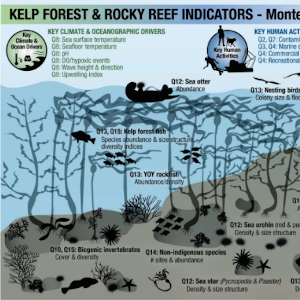Developing a comprehensive portfolio of theoretically sound indicators is fundamental to effective place-based management of coastal ecosystems at a wide range of scales. We reviewed indicator development case studies from seven different social-ecological systems over the first 10 years of the NOAA integrated ecosystem assessment (IEA) program, with the goals of identifying effective strategies and highlighting general principles that would inform future efforts. The IEA framework provided a versatile approach to developing indicators across a diverse range of differently scaled systems and partnerships, guided by organizing principles of screening transparency, iterative review, and an adaptive balance between quantitative evaluation methods and qualitative stakeholder guidance. Information exchange across the broad community of EBM practitioners facilitated progress between systems, chronologically tracking a path that reflected improvements in indicator development methods (especially for social indicators) and a growing focus on multisector EBM in smaller coastal communities. Most projects adopted innovative visual imagery to engage partners and stakeholders, which built trust and communication while enhancing the spectrum of indicators. Using guidance from the lessons above, future indicator development efforts will be better prepared to confront the recurring, transdisciplinary challenges of managing integrated social-ecological systems.
Place-Based Ecosystem Management: Adapting Integrated Ecosystem Assessment Processes for Developing Scientifically and Socially Relevant Indicator Portfolios
Publication date
February 02, 2021
Abstract
Journal
Coastal Management, 2021, Vol. 49, No. 1, 46-71.
DOI
https://doi.org/10.1080/08920753.2021.1846154


